Oxytocin free acid
- CAS NO.:24346-32-5
- Empirical Formula: C43H65N11O13S2
- Molecular Weight: 1008.17
- MDL number: MFCD00076732
- SAFETY DATA SHEET (SDS)
- Update Date: 2024-05-28 19:59:05
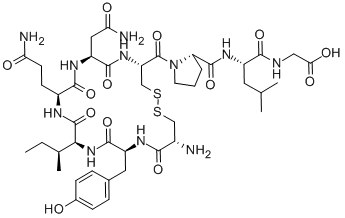
What is Oxytocin free acid?
Description
Oxytocin free acid (9-Deamidooxytocin) is an analog of oxytocin in which the glycinamide residue at position 9 in oxytocin has been replaced by a glycine residue. Oxytocin is a pleiotropic, peptide hormone with broad implications for general health, adaptation, development, reproduction, and social behavior.
The Uses of Oxytocin free acid
Free acid form of oxytocin, which is a hormone involved in many aspects of mammalian reproduction as well as other physiological processes such as bond pairing and cardiovascular homeostasis.
Biological Functions
Oxytocin is a cyclic 9-peptide that, like somatostatin, contains a ring that encompasses a disulfide bridge. Oxytocin has uterotonic action, contracting the muscles of the uterus during gestation, and plays an important role in milk ejection (not milk secretion, which is regulated by the peptide hormone prolactin) from the mammary ducts into the nipples. Exogenous oxytocin most commonly is used for induction of labor, wherein it improves uterine contractions to achieve early vaginal delivery for fetal or maternal reasons (e.g., preeclampsia, Rh factor problems, pregnancy that has exceeded 42 weeks). It also finds use following delivery of the placenta, because it promotes contraction and vasoconstriction and helps to control postpartum bleeding.
Metabolism
In humans, estimates of median plasma half-life of oxytocin range from 3.2 min after a single 2 U bolus injection to 4.8 min during a 500 mU min-1 infusion. Oxytocin is rapidly metabolised in the liver and kidneys, and also in the plasma during pregnancy by secreted oxytocinase (leucyl/cystinyl aminopeptidase), with some degree of metabolism also taking place in the mammary glands[1].
References
[1] C. Ding, F. Magkos, M. K.-S. Leow. “Oxytocin in metabolic homeostasis: implications for obesity and diabetes management.” Obesity Reviews 20 1 (2018): 22–40.
Properties of Oxytocin free acid
| storage temp. | -15°C |
| Water Solubility | Soluble in water to 1mg/ml |
Safety information for Oxytocin free acid
Computed Descriptors for Oxytocin free acid
| InChIKey | NFBCSRNZYJJWNB-IEIRLNIENA-N |
New Products
4-AMINO-TETRAHYDRO-PYRAN-4-CARBOXYLIC ACID HCL 4-(Dimethylamino)tetrahydro-2H-pyran-4-carbonitrile 4-Aminotetrahydropyran-4-carbonitrile Hydrochloride (R)-3-Aminobutanenitrile Hydrochloride 3-((Dimethylamino)methyl)-5-methylhexan-2-one oxalate 1,4-Dioxa-8-azaspiro[4.5]decane 5-Bromo-2-nitropyridine Nimesulide BP Aceclofenac IP/BP/EP Diclofenac Sodium IP/BP/EP/USP Mefenamic Acid IP/BP/EP/USP Ornidazole IP Diclofenac Potassium THOMAIND PAPER PH 2.0 TO 4.5 1 BOX BUFFER CAPSULE PH 9.2 - 10 CAP SODIUM CHLORIDE 0.1N CVS ALLOXAN MONOHYDRATE 98% PLATINUM 0.5% ON 3 MM ALUMINA PELLETS (TYPE 73) LITHIUM AAS SOLUTION 2-Bromo-1-(bromomethyl)-3-chloro-5-nitrobenzene 2-Bromo-3-nitroaniline N-(3-Hydroxypropyl)-N-methylacetamide 3-Bromo-6-chloropyridazine 4-ethyl-3-nitrobenzoic acidRelated products of tetrahydrofuran
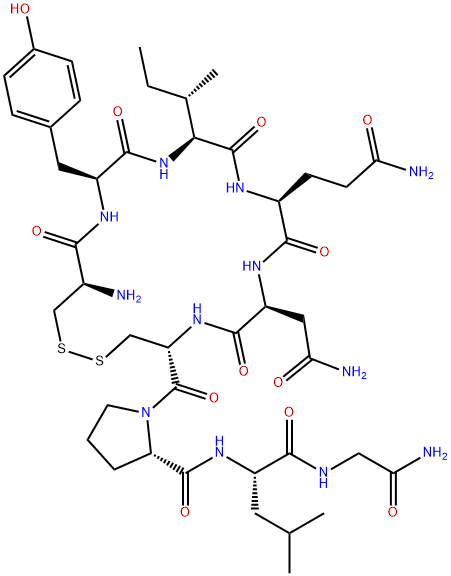
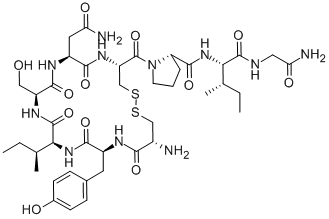

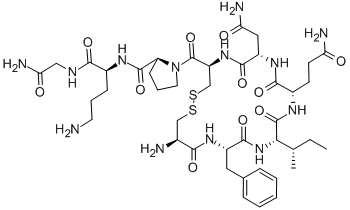
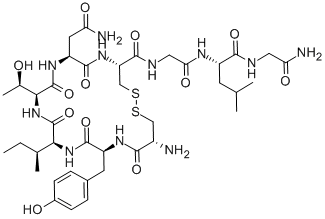
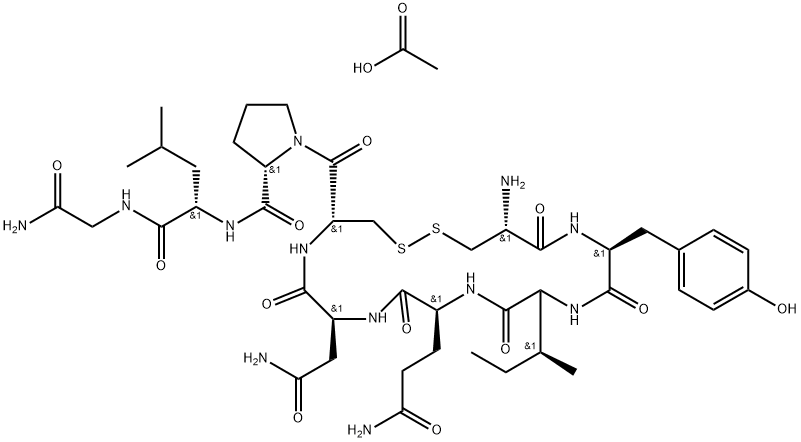
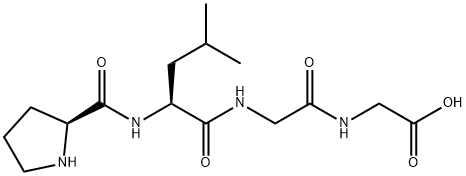

You may like
-
 1-Methyl-6-oxo-1,6-dihydropyridazine-3-carbonitrile 98%View Details
1-Methyl-6-oxo-1,6-dihydropyridazine-3-carbonitrile 98%View Details
99903-60-3 -
 88491-46-7 98%View Details
88491-46-7 98%View Details
88491-46-7 -
 1823368-42-8 98%View Details
1823368-42-8 98%View Details
1823368-42-8 -
 2-(3-(tert-butyl)phenoxy)-2-methylpropanoic acid 1307449-08-6 98%View Details
2-(3-(tert-butyl)phenoxy)-2-methylpropanoic acid 1307449-08-6 98%View Details
1307449-08-6 -
 Ethyl 3-(furan-2-yl)-3-hydroxypropanoate 25408-95-1 98%View Details
Ethyl 3-(furan-2-yl)-3-hydroxypropanoate 25408-95-1 98%View Details
25408-95-1 -
 2-Chloro-5-fluoro-1-methoxy-3-methylbenzene 98%View Details
2-Chloro-5-fluoro-1-methoxy-3-methylbenzene 98%View Details
1805639-70-6 -
 1784294-80-9 98%View Details
1784294-80-9 98%View Details
1784294-80-9 -
 Lithium ClavulanateView Details
Lithium ClavulanateView Details
61177-44-4